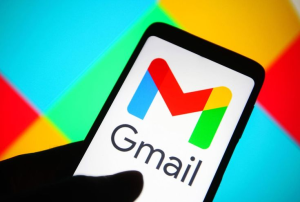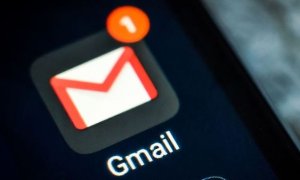How to Send Encrypted Email Gmail
Sending encrypted emails via Gmail can help protect your message’s content from unauthorized access. To do this, you can use a browser extension or third-party service, as Gmail does not provide native email encryption. One common method is to use a tool like “Virtru” or the “Confidential Mode” built into Gmail. Here’s how you can send an encrypted email using both methods:
Method 1: Using Virtru (Browser Extension)
Install the Virtru browser extension: Go to the Chrome Web Store (or the respective store for your browser) and search for the “Virtru for Gmail” extension. Install it.
Compose your email: Open Gmail in your browser, and click on “Compose” to start a new email.
Encrypt your email: In the email composition window, you will see a “V” icon next to the send button. Click on it.
A sidebar will appear. Click the “Encrypt Email” option.
Virtru will guide you through the process of encrypting your email. You can set a password, set expiration, and more.
Send the email: Once your email is encrypted, you can send it as you normally would.
Method 2: Using Gmail’s Confidential Mode
Compose your email: How to send encrypted email gmail Open Gmail in your browser, and click on “Compose” to start a new email.
Enable Confidential Mode:
In the email composition window, you will see a lock icon at the bottom toolbar. Click on it.
A window will appear, allowing you to set an expiration date, require a passcode, and more.
Set access permissions: You can choose whether to require a passcode for access and how long the email will be available.
Send the email: Once you’ve configured the Confidential Mode settings, you can send the email. The recipient will receive a link to access the email.
For both methods, the recipient will need to follow the provided instructions to decrypt and read the email securely. Make sure to share the encryption password or passcode securely with the recipient if required. It’s important to note that while these methods provide a level of email encryption, they don’t offer end-to-end encryption like some other email platforms. If the highest level of security is a concern, you might consider using more secure email services or encryption tools that offer end-to-end encryption, such as ProtonMail or Signal.
Emails contain a plethora of personal and sensitive information. Whether you’re sending financial data, personal messages, or confidential work-related content, it’s crucial to ensure that your emails are secure and protected from prying eyes. One effective way to achieve this is by sending encrypted emails to Gmail. In this article, we’ll delve into the world of email encryption, demystify the process, and guide you through sending encrypted emails in Gmail. Also, read about How to Encrypt Email in Outlook
Understanding Email Encryption
Email encryption is a security measure that transforms the content of your emails into a code that can only be deciphered by the intended recipient. It ensures that even if unauthorized individuals gain access to your email, they won’t be able to read the content.
Why Email Encryption Matters
Privacy: It protects your privacy and sensitive information.
Legal Compliance: It helps you comply with various data protection regulations.
Security: It adds an extra layer of security to your emails.
Setting Up Encryption in Gmail
First, log in to your Gmail account.
Click on the “Compose” button to create a new email.
In the bottom right corner of the email composition window, click on the padlock icon. This will open a menu. Click on “Encrypt” to enable encryption.
Now, compose your email as usual. The email will be encrypted when you send it.
Receiving Encrypted Emails
Opening an Encrypted Email
When you receive an encrypted email, Gmail will prompt you to decrypt it. Enter the decryption key or follow the provided instructions.
Replying to Encrypted Emails
You can reply to encrypted emails just like any other email. Gmail will ensure your response is also encrypted.
How Encryption Works
Encryption Keys
how to send encrypted email gmail Email encryption uses two keys: a public key for encryption and a private key for decryption. Your recipient’s public key is used to encrypt the email, and your private key is used to decrypt it.
End-to-End Encryption
End-to-end encryption ensures that only you and the recipient can read the email. Even Gmail cannot access the content. For more interesting information visit our website dailyymails.com

Common Encryption Tools
Google’s Confidential Mode
Google offers a “Confidential Mode” that allows you to send self-destructing emails and protect attachments. It’s a handy tool for enhancing email security.
Third-Party Tools (H2)
You can use third-party email encryption services like ProtonMail, Tutanota, or Virtru for advanced email security features.
The Importance of Regular Key Updates
Why Update Encryption Keys?
Regularly updating your encryption keys is crucial for maintaining the security of your email communications. Outdated keys can become vulnerable to hacking attempts, making it essential to refresh them periodically.
How to Update Your Encryption Keys
Navigate to your email encryption settings in Gmail.
Look for the option to update keys or generate new ones.
Follow the provided instructions to create fresh encryption keys.
Additional Tips for Email Security
Strong Passwords
While encryption is a robust security measure, it’s vital to complement it with a strong, unique password for your Gmail account. Use a combination of letters, numbers, and special characters to create a robust password.
Two-Factor Authentication
Enable two-factor authentication for an added layer of protection. This feature requires you to enter a code sent to your mobile device when logging in, further securing your account.

Beware of Phishing Emails
Phishing emails can trick you into revealing your encryption keys or login information. Always scrutinize emails, especially those requesting sensitive information, and be cautious of suspicious links.
Conclusion
Ensuring the security and privacy of your emails is paramount in today’s digital world. By following the steps outlined in this article, you can send and receive encrypted emails in Gmail with ease. Email encryption is a simple yet powerful tool that provides an additional layer of protection for your valuable information.
For more tips and tricks on enhancing your email security, feel free to explore our website.
FAQs
Is email encryption necessary for all my emails?
Email encryption is particularly important for sensitive information. While it may not be necessary for every email, it’s advisable for personal, financial, and confidential communications.
Can I send encrypted emails to recipients who don’t use Gmail?
Yes, you can send encrypted emails to recipients with other email providers. They will receive instructions on how to decrypt the email.
Are there any limitations to email encryption in Gmail?
Gmail’s encryption offers robust security. However, ensure your recipient is capable of decrypting the email, and remember that the subject line is not encrypted.
How can I verify that my email is encrypted?
When composing an email in Gmail, you’ll see a padlock icon in the bottom right corner. Clicking on it will confirm that encryption is enabled.
What happens if I forget my decryption key?
Forgetting your decryption key may lead to permanent loss of access to the email. It’s crucial to store your key securely.